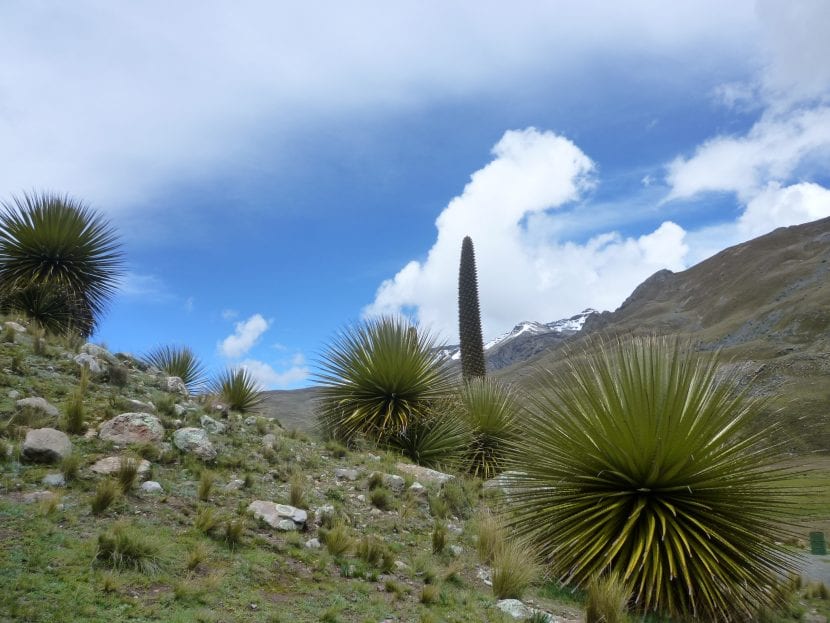
Image - Wikimedia / Paleta59
When we think of bromeliads we tend to imagine plants living in tropical rain forests, growing by developing rosettes of normally wide leaves and producing beautiful flowers. But not all are like this: Pinprick They are a genus that has had to adapt to living in difficult conditions, where temperatures can become extreme and where rainfall is rather scarce.
But that doesn't have to make them plants with little ornamental appeal. Unlike. In places where drought is a problem in itself, they will make any garden, patio and even balcony look very beautified.
Origin and characteristics of the Puya
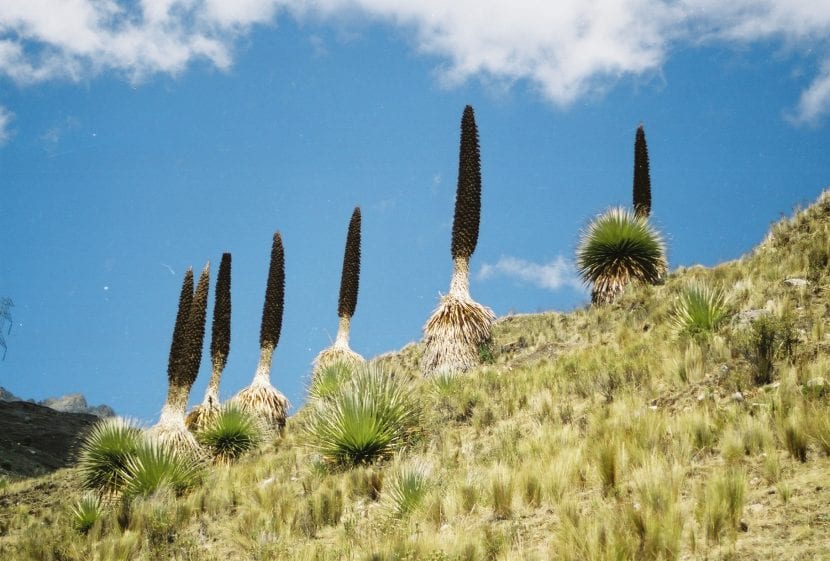
Puya are a genus of bromeliads composed of some 23 accepted species of the 296 that are described native to South America and southern Central America. Specifically, they can be found more easily growing in the Andes. They develop rosettes of succulent or slightly fleshy leaves, green or greyish in color, with a spiny-serrated margin.
The flowers are grouped in inflorescences, and are bisexual, densely hairy. The fruit is a dry capsule, inside which are the seeds.
They are monocarpic plants; that is to say, after flourishing and fruiting, they die.
Main species
The new options are the following:
puya chilensis
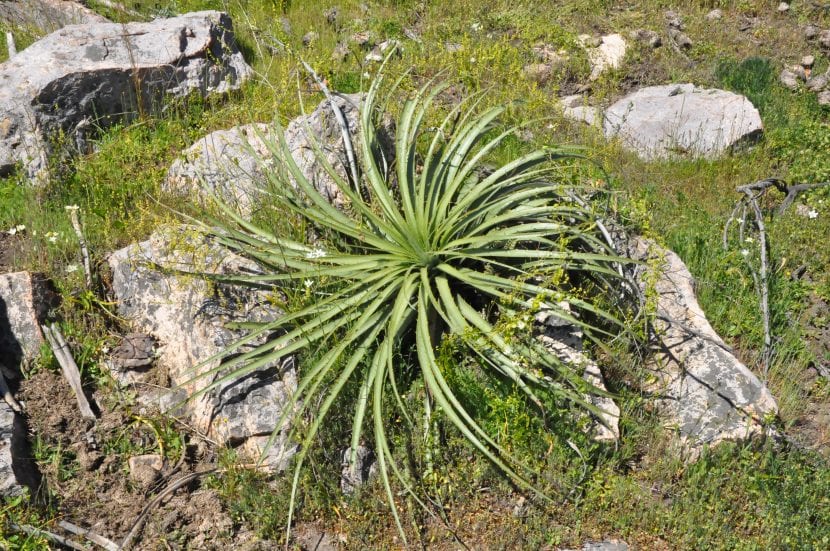
Image - Wikimedia / Yastay
It is endemic to central Chile, and can reach a height of 2 to 3 meters. It takes about 20 years to flower, developing an inflorescence of about 2 meters similar to a medieval mace. Once pollinated, it produces numerous nuts with seeds, although its most recommended multiplication method is by separating the seedlings that sprout shortly before and during flowering.
Puya raimondii
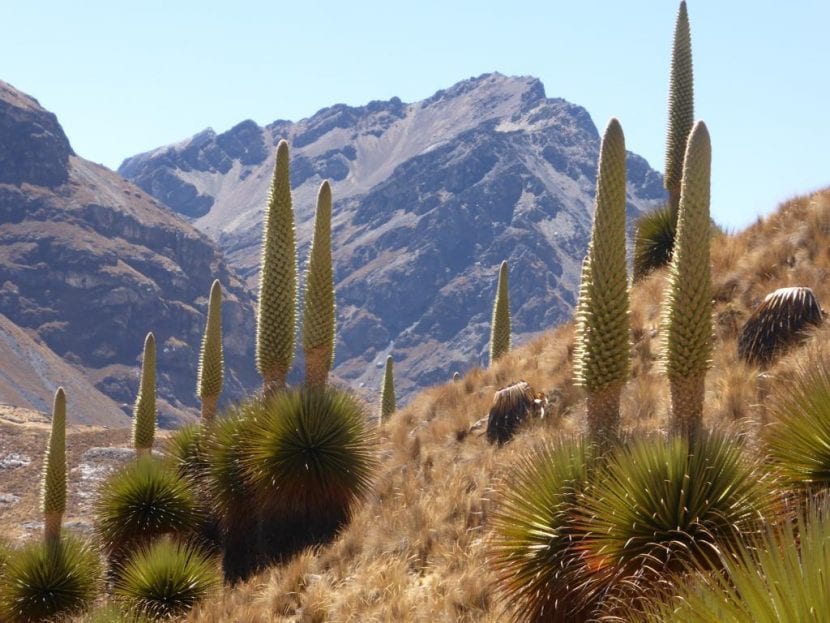
Image - Wikimedia / Urrola
The most popular is the Puya raimondii, which is also the largest of all bromelids with a height of up to 12 meters. It is endemic to Bolivia and Peru, where it lives in the high Andean region, at an altitude between 3200 and 4800 meters above sea level. It is known as titaca, and it can live for more than 100 years.
What are the care they require?
The Puya are not difficult to maintain, but it is important to keep in mind some things so that they grow well:
Location
They are plants that they worship the sun. They need an exhibition where they are exposed to it, if possible, throughout the day. In semi-shade or shade they cannot develop normally.
Earth
It must have excellent drainage. They do not tolerate waterlogging.
- Pots: fill it with sandy substrates, pumice type, akadama, or if you prefer universal substrate mixed with equal parts perlite. Fine gravel (about 3mm thick) would also work if you mix it with 40-50% mulch or similar.
- Garden: they grow in well-drained soils, with a neutral or slightly acidic pH. If it rains little in your area but when it does, there may be a risk of flooding, and the soil you have tends to compact, make a 1m x 1m hole and fill it with some substrate mentioned above. This will prevent its roots from rotting.
Irrigation
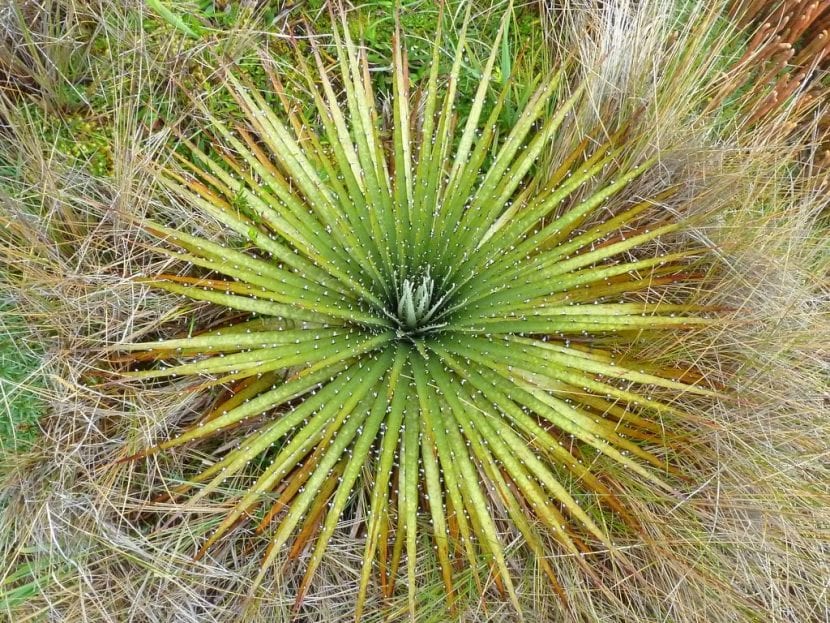
Image - Flickr / Andreas Kay
Rather scarce. During the summer they will appreciate one or two weekly waterings, but the rest of the year with one every 7 or 10 days will be more than enough for them to grow well.
When watering it is important to avoid wetting the leaves, especially if the sun hits them at that time since otherwise they would burn.
Subscriber
From spring to fall. If we fertilize them regularly, for example, once every 15 days or every 30, depending on the type of fertilizer and what is indicated on the package, we will make them grow stronger and healthier.
What type to use? Well, liquids are more suitable for plants that are grown in pots, since they do not hinder the drainage of water at any time; granules or those that are powder type are used more for those that are on the ground.
In any case, it is very important to keep in mind that they must be used in the correct way, since there are not a few who, if used incorrectly, could damage the plants causing burns to the roots and even death.
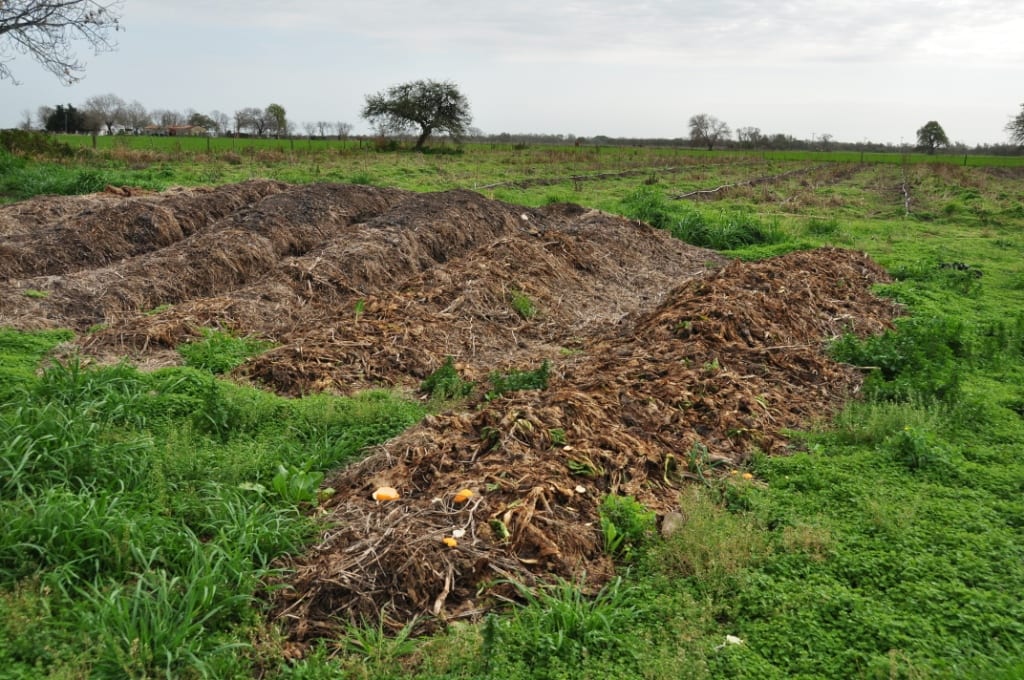
Multiplication
Puya multiply by seed and seedling separation in autumn or spring. Let's know how to do it:
Seeds
The seeds it is recommended to sow them in seedling trays with substrate for seedlings (on sale here) mixed with perlite in equal parts, putting a maximum of two in each alveolus.
Cover them with a very thin layer of substrate, and water. Now you will only have to place everything outside, in semi-shade, and keep the soil moist but not flooded.
If all goes well, they will germinate in about 10 days.
Seedlings
To get copies in a faster way, what is done is separate the seedlings as soon as they are about five centimeters tall, and then plant them in individual pots with sandy substrate (pomx for example).
They are placed in semi-shade and watered every time the substrate is completely dry. As soon as there is growth, you should put them in an area where they receive more and more direct sunlight.
Planting or transplanting time
In spring.
Rusticity
The Puya they are grown outside all year round in warm areas. In general, they resist very weak and specific frosts of up to -2ºC, but the young specimens require some protection.
Uses of the Puja
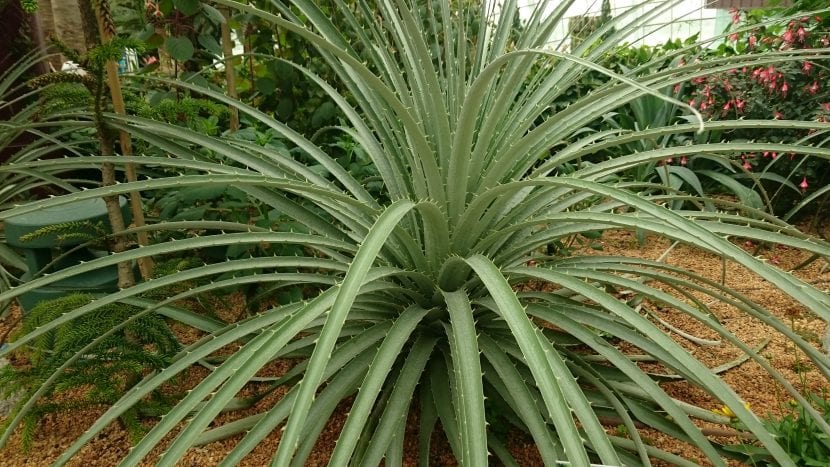
Image - Wikimedia / Mokkie
Ornamental
They are very beautiful plants, and even curious. They look great in succulent gardens, or in xero-gardens. Also in pots they can beautify terraces and patios a lot.
Culinary
Young leaves of many species, such as the puya chilensis, eaten raw in salads.
What do you think of these plants?